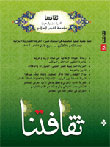فهرست مطالب
فصلنامه ثقافتنا
پیاپی 29 (1390)
- تاریخ انتشار: 1391/03/01
- تعداد عناوین: 7
-
صفحات 29-46
-
صفحات 47-78
-
صفحات 79-122
-
صفحات 125-154
-
صفحات 155-148
-
صفحات 185-206
-
Pages 7-28After the encounter of the world of Islam with the West, reformists of the Islamic countries tried to get rid of backwardness in order to join the international caravan of modern civilization. They tried to gain access to the sciences that had led to material mass production. But the developments in the Islamic world caused a schism between religious and civil education, when the latter took charge of updating curriculum and materializing the material development of the Islamic countries. This schism between religious and civil education indeed had negative consequences for the identity and dignity of the Muslim countries. Hence reformers tried to bridge the gap between the two. The first experience in this regard was that of the School of Languages of Cairo. However it was halted, for the British attack put an end to it. But Najaf resumed this trend which was manifest in reforms in the religious education. The efforts of Shaikhk Mohammad Reza Muzaffar were the first steps in this regard. The present paper is an attempt to study different aspects of the Muzaffar School in reformation of religious education.
-
Pages 29-46Mohammad Mahdi Basir (1895-1974) is a renowned literary figure, critic and poet of the Arab world. He was a blind Iraqi citizen who studied in Iraq, Egypt and France. The present paper is an attempt to study Al Basir’s viewpoints about civilization. He maintains that civilization is the brain child of natural incentive of man for perfection. This is why human beings create civilization throughout history. There are differences about the nature of civilization; some consider it material some spiritual. In fact civilization is science; which does not have a specific homeland. Civilization is love; which does not have any homeland. Civilization is based on ethics, stability and tolerance.
-
Pages 47-78The contemporary literature of Iran and Syria show that the contemporary Arabic and Persian literatures enjoy a single background. In the present paper short stories of Syria are taken as an example of short stories of the contemporary Arab world. A comparative study of the short stories of the two sides shows that the themes of the story writers of the two sides are almost similar. The present paper is an attempt to study the veteran short story writers of Iran and Syria and also to review the most important themes of these stories. The following stories have been chosen from amongst the short stories of Iran: Mohammad Jamalzadeh, Sadeq Hedayat, Simin Daneshvar. And the following writers have been chosen from amongst the Syrian story writers: Ali Khalqi, Zakaria Ta’mer, and Ghadah As-Saman.
-
Pages 79-122After the sway of the colonial powers over the Islamic world and political, military, cultural and economic domination of the west over these countries, a number of Islamic movements were formed in these countries, whose main objective was regaining of the independence of their countries. As a result, these movements moved towards engagement in cultural, social and economic activities. This orientation led to the social change whose final goal was establishment of an Islamic state. Although there are differences in the style and strategy of their activities, their goal is single. The relationship between these movements and the ruling regimes are different, which include cooperation and participation, ceasefire as well as conflict and confrontation. The present article is an attempt to study the relationships between the Islamic movements and the ruling regimes in the Islamic countries.
-
Pages 125-154The present article is an attempt to study the issue of unity in the field of civilization of the Islamic world. Hence, Sibveih and his role in this regard is the focal point of this paper. Sibveih wrote the first book on Arabic grammar entitled “Al-Kitab”. It has remained as the greatest source in all Islamic countries. Sibveih was an Iranian. His thought and works were the product of Iranian profound culture and according to Shoqi Zaif a sign of deep scientific and cultural relations in the Islamic world.
-
Pages 155-148Social analysis of language is among the latest linguistic studies, which deals with individual and social factors in effective understanding of language. Sibveih has very precisely studied these aspects that include the relations between language and society, language and religion, as well as complicacies of language. He also created unity among dialects of Arabic language.
-
Pages 185-206The word ‘mo’rab’, which means Arabized non-Arabic words, refers to the non-Arabic words, often Persian words, that have entered Arabic language. The relations between Persian and Arabic languages before and after Islam paved the way for the entry of a number of Persian words into Arabic language. Sibveih has precisely studied these words and explained the changes in their pronunciation. The later literati followed his method because of its precision.


